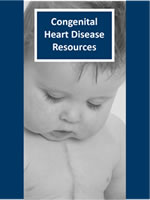Children and Youth with Special Health Needs (CYSHN)
Programs
Contact Info
Patent Ductus Arteriosus
Condition Description
Patent ductus arteriosus (PDA) is the term that describes the failure of a blood vessel present before birth (the ductus arteriosus) to close in the early days after birth. This vessel is present in the unborn child to allow blood to bypass the lungs since the lungs are not needed to provide the blood with oxygen prior to birth (the mother's placenta supplies the baby's blood with oxygen before birth). After birth this blood vessel normally closes off and turns into a fibrous band of tissue that disappears.
Patent ductus arteriosus is a common condition to babies born prematurely, but it is not considered a congenital defect in those children; rather it is typically a transient effect of their early birth and lung immaturity. Most of the time no cause for the PDA can be identified. Exposure to the rubella virus can increase the risk of having a PDA.
Babies with a patent ductus arteriosus will often have a hoarse cry, a cough, pneumonia, heart failure with difficulty breathing, and poor weight gain. They may perspire when they are feeding and have a rapid heart and respiratory rate.
